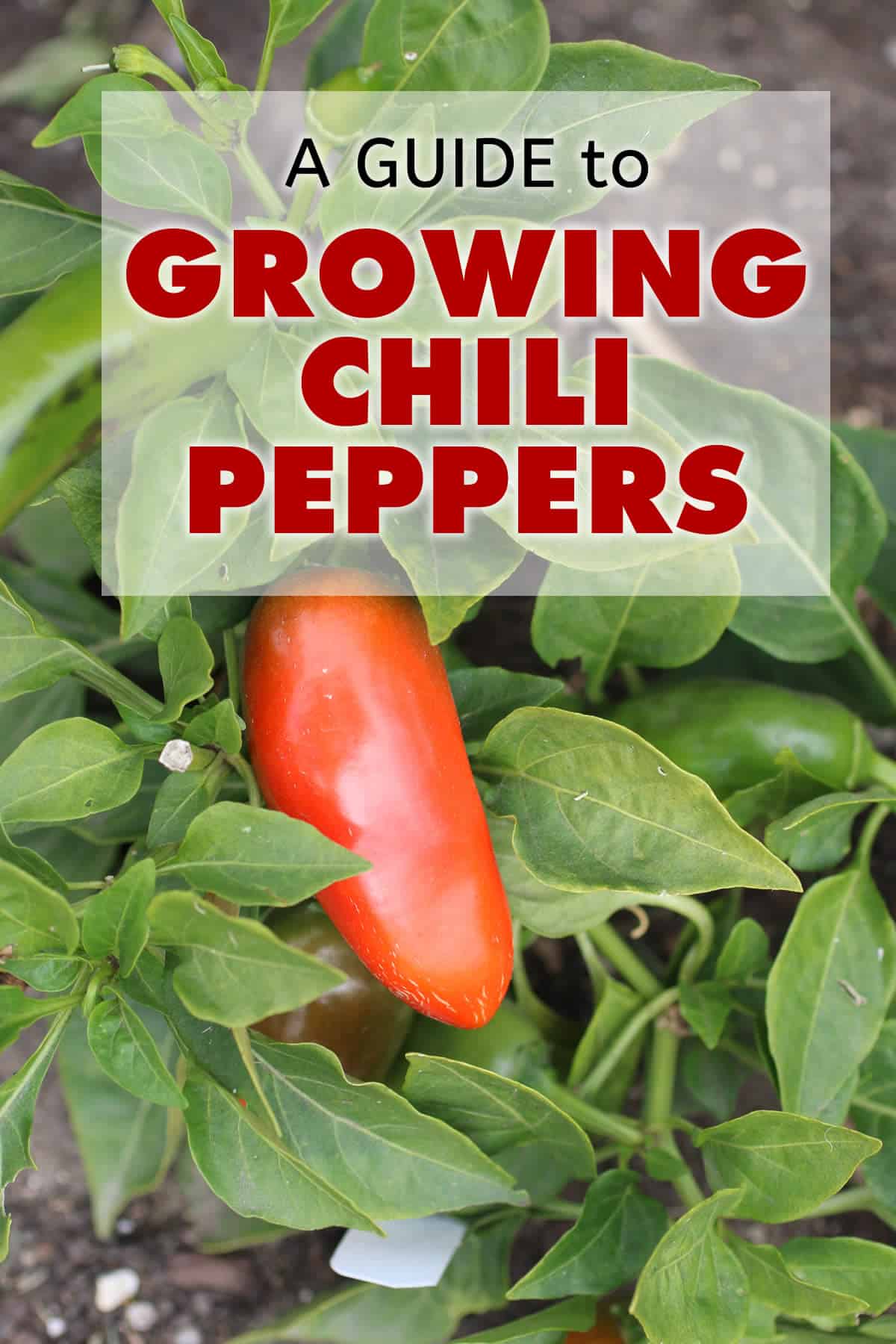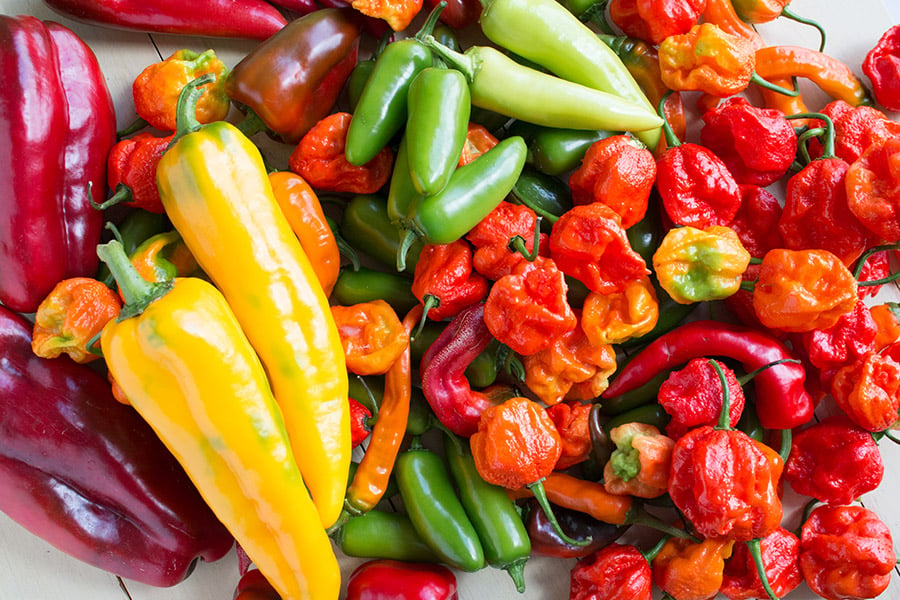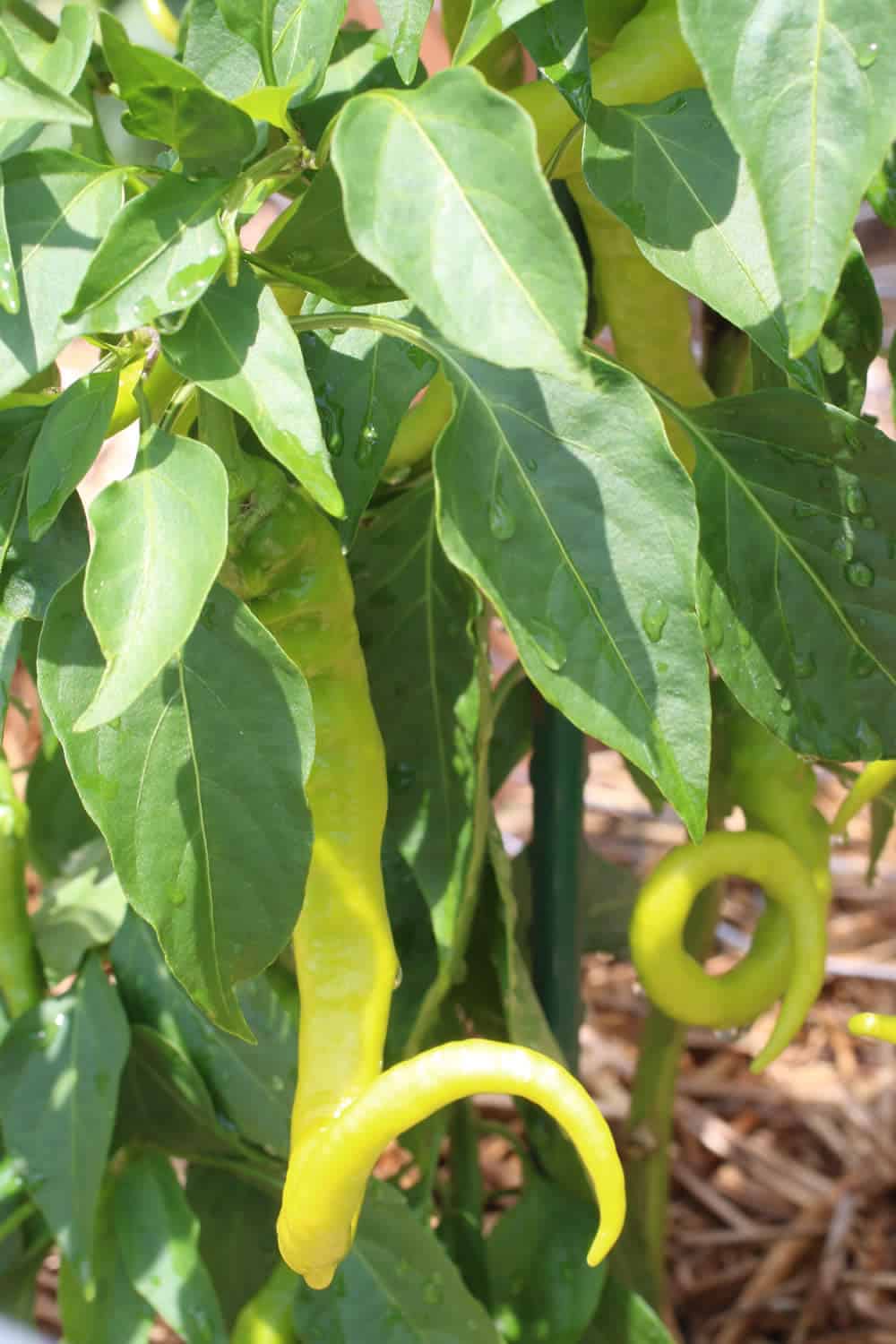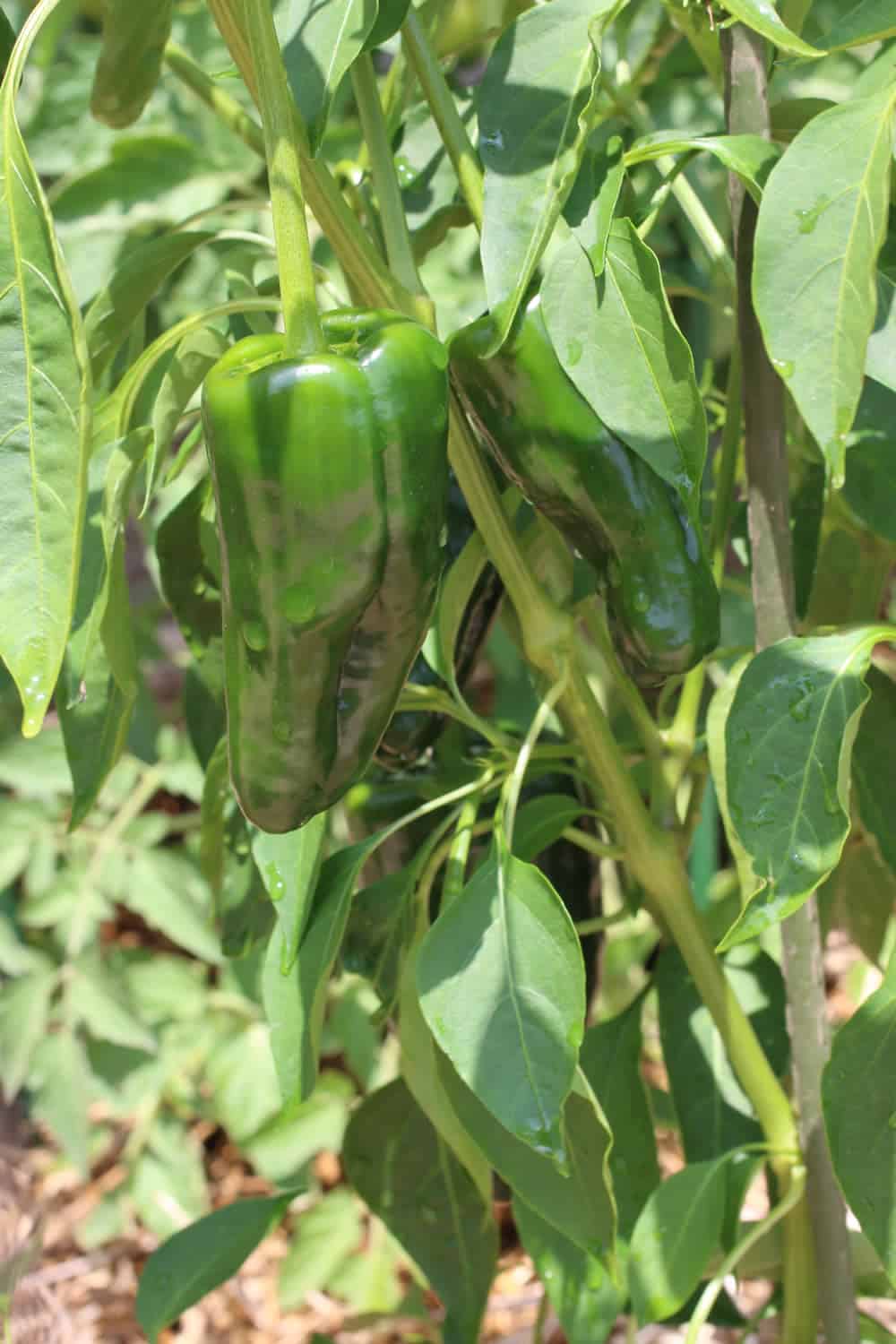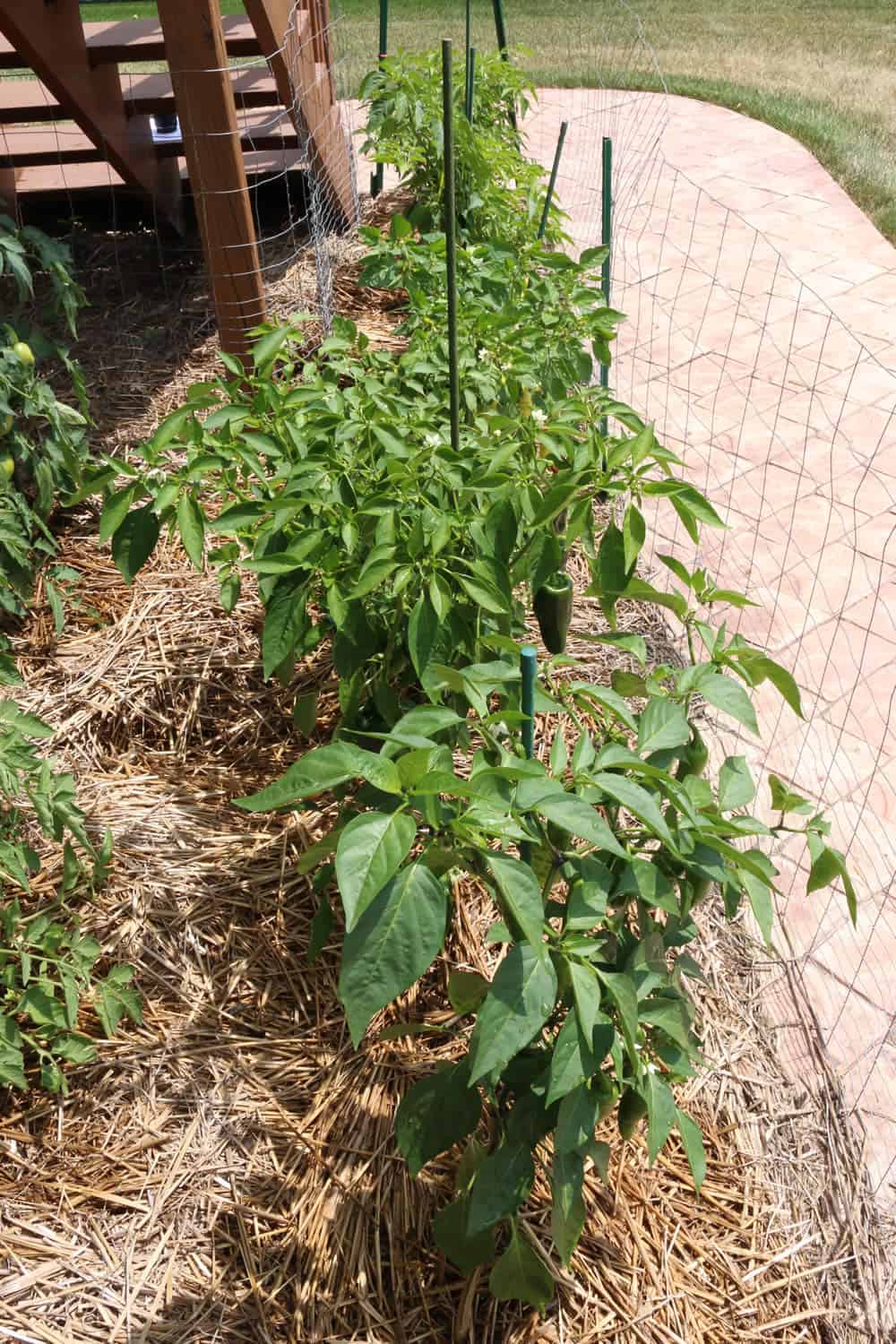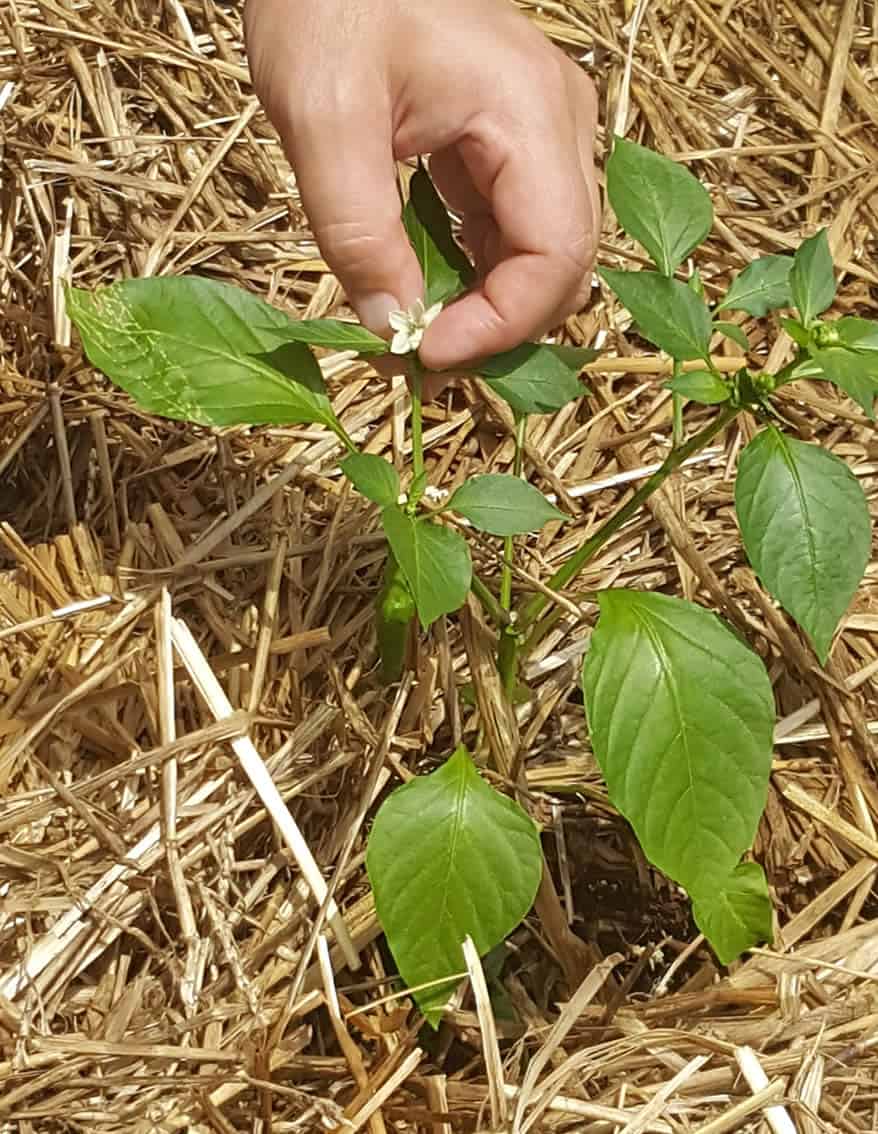Got any further questions? Ask away! I’m happy to help. Feel free to contact me anytime and I will do my best to answer your questions. – Mike H. Keep them warm (80 -85 degrees F is best) and in a sunlit place. If this is your first time growing your chili peppers from seeds, learn more about growing chili peppers from seed. Once there is no worry of frost, you can plant your pepper plants to your garden or chosen spot. Choose a location with full sunlight, as chili peppers LOVE the sun. Mix in some mushroom compost or other organic compost to make the soil fertile and moist. Water! Keep the soil constantly moist, but not soaking wet. Chili peppers love water as much as they love sun, but you don’t want to inundate the plants, or you run the risk of rotting. Water every other day or every third day. Include a good plant food product. Learn more about growing chili peppers in the ground or garden. Learn more about growing and harvesting chili peppers through the links below, including:
Growing Chili Peppers from Seed Growing Chili Peppers in the Ground Growing Chili Peppers in Pots Growing Chili Peppers Indoors Harvesting Your Chili Peppers Winter Gardening for Chili Peppers and more
Watering Your Pepper Plants
As with growing chili peppers in general, keep the soil moist but do not overwater them. For pepper plants in pots or containers, do not let the soil dry out completely. When peppers start to grow, cut back on your watering schedule a bit, but again, do not let the soil dry out. Once the peppers begin to appear, fertilize one more time. You can also use manure or compost, which releases more slowly into the soil. Much, however, is affected by your soil, so you may want to consider a soil test if you are having issues. I get a lot of questions about growing chili peppers. Here are some of the most frequent.
How long does it take to grow peppers?
The length of growing time for chili peppers varies from pepper to pepper, though most mature in 60-150 days, which is a big range. Sweeter peppers typically mature in 60-90 days, with hotter peppers taking longer. Consider, though - the number of days to maturity noted on seed packets means h the days after transplanting until the pepper plant bears mature peppers. It does not take into consideration the time it takes from planting seeds to growing into a seedling that you can transplant, which is about 8-10 weeks, so keep this in mind. Once the peppers begin to appear, fertilize one more time. You can also use manure or compost, which releases more slowly into the soil. Much, however, is affected by your soil, so you may want to consider a soil test if you are having issues.
Can you save seeds from your chili pepper plants and use them to grow plants later?
Absolutely! As a chili pepper grower, you may want to save the seeds from your current batch of chili peppers rather than purchase new seeds each year. Saving seeds also saves money, and ensures your harvest will include your very favorite peppers from season to season. Luckily for us, chili peppers lend themselves to easy seed saving. Harvesting the seeds is a simple process, and they require very little effort to dry and store. Learn how to save seeds from fresh peppers to grow later. Do Not Over Water Your Pepper Plants Pepper plants love their water, of course, and they need a steady supply, but peppers won’t grow well in overly saturated soil. It waterlogs their roots. Use soil that retains moisture yet has proper drainage. Mulch is useful to prevent water evaporation. If you are uncertain about watering, don’t. Never over-water. Most diseases and growing problems are due to overwatering. Using a lot of fertilizer may help the pepper plant to develop bright leaves and flowers, but hinders pepper production. A good 5-10-10 fertilizer is usually sufficient for peppers. Work it into the soil before transplanting. We use a solution of fish emulsion and seaweed. Pinch Your Pepper Plants for Bushier Plants When the pepper plant is about six inches high, clipping the growing tip will result in a bushier plant. Remove any flowers that appear early, as the early flowers diminish the plants overall energy.
